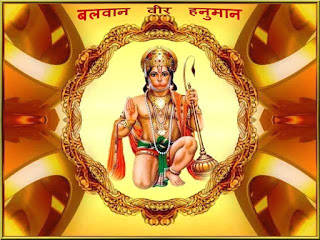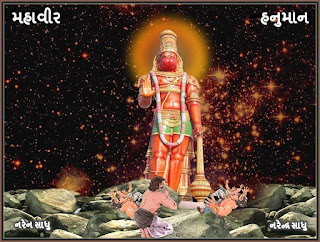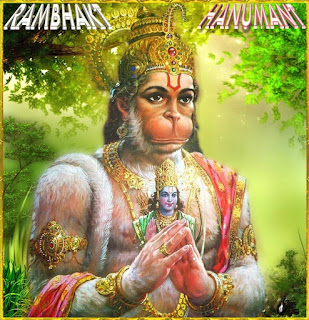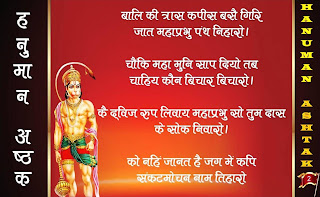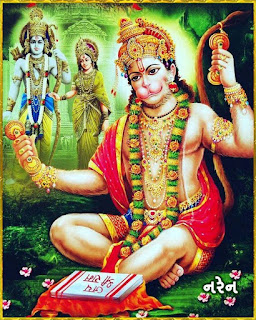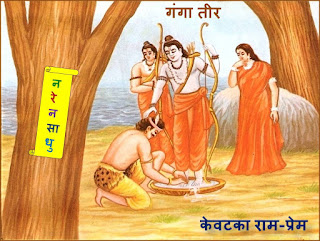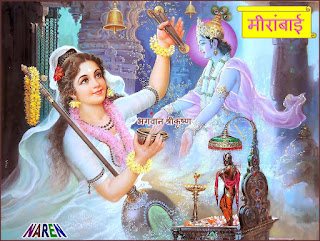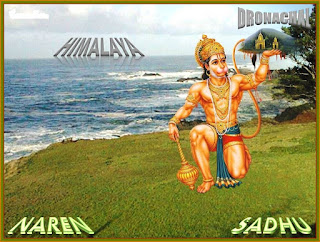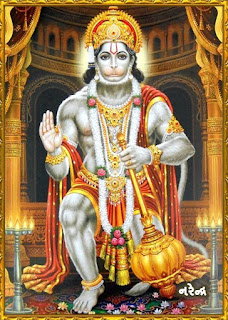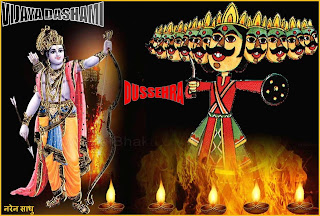2nd
December, 2015 is the Jayanti of Narsinh Mehta (or Narsi Mehta or Narsi
Bhagat), 15th century Hindu saint-poet, acclaimed as “Adi Kavi” in
Gujarati literatures and notable bhakt of Lord Shri Krishna, was born in the
year 1414 at Talaja village which is belongs to Saurashtra region under
Bhavnagar district in the Indian state of GUJARAT. Talaja is located on National
Highway No. 8 in between the district headquarters Bhavnagar city (50 kms)
and Mahuva taluka (40 kms).
Narsi
Mehta was born in Nagar Brahmin cast. His parents were Krishnadas and
Dayakuvar but lost parents when he was 5 years old. He could not speak until
the age of 8 year. He was raised by his grandmother Jayagauri. Once a SADHU
came in village, Narsi was brought to Sadhu by his grandmother. She said to
Sadhu that Narsi is not able to speak yet. Sadhu saw something well future of
Narsi in Samadhi (meditation); he put his hand on Narsi’s head and told to
speak ‘Radhe Govind’. Miraculously, in between present villagers, Narsi started
to speak ‘Radhe Govind’.
Narsinh
Mehta married to Manekbai. Mehta and his wife stayed at his brother Bansidhar's
place. However, his brother's wife (sister-in-law or bhabhi) did not welcome Narsinh very
well. She was an ill-tempered woman, always taunting and insulting Narsinh for
his worship (Bhakti). One day, Kana Dhedh (Harijan) son’s wife was expired due
to bad illness in gaon, no one was ready take her dead body to Samashan. Mehta
took her in Shamshan and do last ritual of her. When he came to home, his
bhabhi didn’t allow him in home and due to these types of day to day insults
and taunts, he left the house and went to a nearby forest in search of some
peace, where he fasted and meditated for seven days by a secluded Shiva
Lingam until Lord Shiva appeared before him in person. Lord
Shiva asked Narsi for boon. Mehta said that Prabhu ! Give that what you love
much more. Shiva replied and gives boon that he loved Lord Vishnu’s Bhakti then
on Narsi's request; Lord Shankar took him to Vrindavan and showed him
the eternal Raas Leela of Lord Shri Krishna with Radha Rani and Gopis.
A legend has it that Narsi, transfixed by the spectacle, burnt his hand with
the torch he was holding, but he was so engrossed in the ecstatic vision that
he was oblivious to the pain. Mehta, as the popular account goes, at Lord Krishna's
command, decided to sing His praises and the nectarous experience of the Rasa
in this mortal world. Lord Shri Krishna also told that whenever you sing
‘Kedaro’ for Me, I will come personally to you and solve your problem whosoever
of your worldly.
After this
dream-like experience, the transformed Mehta returned to his village, touched
his sister-in-law's feet, and thanked her for insulting him. In Junagadh,
Mehta lived in poverty with his wife and two children, a son named Shamaldas,
and a daughter for whom he had special affection, Kunwarbai.
How Shri
Krishna, in the guise of a wealthy merchant, helped Mehta in getting his son
married is sung by the poet in ‘Putra
Vivah Na Pada’. Once, one Dixit came in Junagadh in search of adequate
bridegroom for ‘daughter of Vadnagar’s Madan Mehta’ and after seeing Shamal, he
confirmed marriage of Shamal to daughter of Madan Mehta. During marriage function,
one snake beat to Hanuman Pratap (or Hanumant), who was son of Sarangdhar (or
Salangdhar). At that time, Narsi Mehta requested Lord Shri Krishna to alive
Hanumant but Lord Krishna clears that Sarangdhar has taken false oath of his
son so death of his son happen. Even if, Mehta knew that Sarangdhar was not
happy with his son’s marriage with Madan Mehta’s daughter and his behavior was
opposite to him but still he requested Bhagwan Shri Krishna to alive Hanumant. At
this time God Krishna told that it is only possible if life of your son Shamal
will be given to Hanumant. Mehta agreed and Hanumant became alive but his son
Shamaldas has died. Due to sudden dead of son Shamal, after all Mehta’s wife Manekbai
also died.
How Lord Krishna
helped his beloved devotee Narsi Mehta at the time of ‘Kunvarbai’s Mameru’ is a
legend depicted in 'Mameru Na Pada'. After marriage of Mehta’s daughter Kunwarbai
(or Kunvarbai) to ‘son of Shrirang Mehta of Una’, Kunwarbai became
pregnant and it was a custom for the girl's parents to give gifts and presents
to all the in-laws during the seventh month of pregnancy. This custom, known
as Mameru, was simply out of reach of poor Narsinh who had hardly anything
except intransigent faith in his Lord. This episode is preserved vividly in the
memory of Gujarati people in compositions by later poets and in Gujarati film
like Kuvarbai Nu Mameru (1974). The first ever Gujarati talkie (feature) film, Narsinh
Mehta (1932) was also based on Narsinh Mehta's life.
Other famous
legend include 'Hundi (Bond)' episode. Mehta writes Hundi to Shamalsha
Seth residing in Dwarka. The episode in which Bhagwan Shri Krishna takes form
of Shamalsha Seth and cleared a bond written by poverty-stricken beloved, is
famous not only in Gujarat but in other parts of India as well.
The Har Mala
(Garland) episode deals with the challenge given to Mehta by Ra Mandlik (1415–1472),
a Chudasama King, to prove his innocence in the charges of immoral
behaviour by making the Lord Himself garland Narsinh. Mehta depicts this
episode.
Last he went
to Mangrol where in the year 1481, at the age of 67, he is believed
to have died. The crematorium at Mangrol is called 'Narsinh Nu Samshan' where
one of the sons of Gujarat was cremated. He will be remembered for his poetic
works and devotion to Lord Krishna. He is known as the first poet of Gujarati.
Narsi Bhagat
revelled in devotion to his hearts' content along with Sadhus, Saints and all
those people who were Hari's subjects – Harijans – irrespective of
their caste, class or sex. It also seems that he must have fallen into a
somewhat ill repute for his close relations with Lord's Sakhis and Gopis,
Narsinh mehta's women followers, with whom he danced and sang. The Nagars of
Junagadh despised him and spared no opportunity to scorn and insult him. By
this time, Mehta had already sung about the Rasaleela of Radha and Krishna.
The compositions are collected under the category of Shringar compositions.
They are full of intense lyricism, bold in their erotic conception
and are not without allegorical dimensions, this saves the compositions from
being something of erotic court poetry of medieval India.
Narsi Mehta
is a pioneer poet of Gujarati literatures. He is known for his literary
forms called "Pada (Verse)", "Aakhyan" and
"Prabhatiya".
He resolved
to compose more than 1500 kirtans or compositions. The works of Narsi
Mehta are divided into three categories :-
(i) Autobiographical
compositions :- Putra Vivah, Mameru, Hundi, Har Same No
Pada, Jhari Na Pada
and compositions depicting acceptance of Harijans. These works deal with the
incidents from the poet’s life and reveal how he encountered the Divine in
various guises. They consist of ‘Miracles’ showing how ‘Narsaiyya’s Lord Shri
Krishna helped his devotee in the time of crises.
(ii) Miscellaneous
Narratives :- Chaturis, Sudama Charit, Dana Leela and episodes based on
Srimad Bhagwatam. These are the earliest examples of ‘Akhyana’ or narrative
type of compositions found in Gujarati. These include :-
(1) Chaturis, 52
compositions resembling Jaydeva’s masterpiece Geeta Govinda dealing with
various erotic exploits of Radha and Krishna.
(2) Dana Leela poems
dealing with the episodes of Krishna collecting his dues (dana is toll, tax or
dues) from Gopis who were going to sell buttermilk etc. to Mathura.
(3) Sudama Charit is
a narrative describing the well-known story of Krishna and Sudama.
(4) Govinda Gamana or the "Departure of Govind" relates the episode of ‘Akrura’ taking
away Krishna from Gokul.
(5) Surata Sangram, The Battle of Love, depicts in terms of a battle the amorous play between
Radha and her girl friends on the one side and Krishna and his friends on the
other.
(6) Miscellaneous
episodes from Bhagwatam like the birth of Krishna, his childhood pranks and
adventures.
(iii) Songs of Sringar :- These are the Padas dealing with the erotic adventures and the
amorous exploits of Radha and Krishna like Ras Leela. Various clusters of Padas
like Ras Sahasrapadi and Sringar Mala fall under this head. Their dominant note
is erotic (Sringar). They deal with stock erotic situations like the ossified
Nayaka-Nayika Bheda of classical sanskrit Kavya poetics.
Some famous
Gujarati Bhajans/Prabhatiyas written by Narsinh Mehta :-
(1) Vaishnava
Jana To Tene Re Kahiye, Nahi Mayama Jenu Man Re…Krishna Vina Biju Kai Na Jove
(2) Maari
Hundi Swikaro Maharaj Re Shamala Girdhari, Maari Hundi Samaliya Ne Hath Re
Shamala Girdhari
(3) Je Game
Jagat Gurudev Jagdish Ne, Te Tano Kharkharo Fok Karavo…Sukh Sansari Mithya Kari
Manajo, Krishna Vina Biju Sarv Kachu
(4) Samarne
Shri Hari, Mel Mamata Pari, Jone Vicharine Mool Taru; Tu alya Kon Ne Kone
Valagi Rahyo, Vagar Samaje Kahe Maaru Maaru
(5) Jagi Ne
Jovu To Jagat Dishe Nahi, Ungh Ma Atapata Bhog Bhase, Chitt Chaitanya Vilas Tad
Roop Chhe, Brahm Lataka Kare Brahm Paase…Ghat Ghadiya Pachhi Naam-Roop Joojava,
Ante To Hem Nu Hem Hoy
(6) Akhil
Brahmand Ma Ek Tu Shri Hari, Jujave Roope Anant Bhase
(7) Raat
Rahe Jyare Paachhali Khatghadi, SADHU Purus Ne Sui N Revu…Jogiya Hoy Tene Jog
Sabhalava
(8) Unchi
Medi Te Maara Sant Ni Re, Mein To Ma’hli N Jaani Ram
(9) Jalkamal
Chhandi Jane Bala Swami Amaro Jagase, Jagase Tane Marse, Mane Bal Hatya Lagase
(10) Jaag Ne
Jadva Krishna Govaliya, Tuj Vina Dhen Ma Kon Jaase, 360 Govaliya Tole Valya,
Vado Te Govaliyo Kon Thase
(11) Sukh
Dukh Manma N Aaniye, Ghat Sathe Re Ghadiya, Talya Te Koina Nav Re Tale,
Raghunathna Jadiya
(12) Narayan
Nu Naam J Leta, Vaare Tene Tajiye Re, Manasa Vaacha Karmana Karine, Lakshmivar
Ne Bhajiye Re
(13) Ram
Sabhama Ame Ramavane Gya’ta, Pasali Bharine Ras Pidho, Harino Ras Puran Paayo
(14) Ame
Mahiyaara Re, Gokul Gamna, Mare Mahi Vechavane Jaava
(15) Aajni
Ghadi Te Raliyamali, Haa Re ! Mahro Vhaloji Aavyani Vadhamani
(16) Aasha
Bharya Te Ame Aaviya, Ne Mare Vhale Ramadya Raas Re, Aavel Aasha Bharya
(17) Eva Re
Amo Eva Re, Tame Kaho Chho Vali Teva Re…Harijan Thi Je Antar Ganashe, Tena
Fogat Fera Thala Re
(18) Kanaji
Tari Ma Kehse Pan Ame Kanudo Kehsu Re, Etalu Kehta Nahin Maane To Gokul Meli
Deshu Re
(19) Giri
Taleti Ne Kund Damodar, Tya Mehtaji Nhava Jaay
(20) Jasoda
Tara Kanudane Saad Karine Var Re, Aavadi Dhoom Machave Vraj Ma, Nahi Koi
Puchhan Haar Re
(21) Nagar
Nandajina Laal, Ras Ramanta Mari Nathadi Khovani, Kaanha Jadi Hoy To Aal
(22) Rudi Ne
Rangili Re Vaala Tari Vasali Re Lol, Vasaldi Mare Mandiriye Sambhalay Jo
(23) Padho
Re Popat Raja Ram Na, Sati Sitaji Padhave, Pase Re Bandhavu Rudu Panjaru, Mukh
Thi Ram Japave
(24) Bholi
Re Bharvadan Harine Vechavane Chali Re, Girivardharine Upadi, Matukima Ghali Re
(25) Va Vaya
Ne Vadal Umatya, Gokulma Tahukya Mor, Malava Aavo Sundrivar Shamliya
(26) Sheri
Valavi Sajj Karu, Ghare Aavo Ne ! Aanganiye Patharavu Phool, Valam Ghare Aavo
Ne
(27) Bhalu
Thayu Bhagi Janjal, Sukhethi Bhajishu Shri Gopal
(28) Ja Ja
Nindara Hu Tune Vaaru, Tu Chhe Naar Dhutari Re…
(29)
Ghadapan Kone Mokalyu, Janyu Joban Rahe Saukaal, Umbara To Dungara Paya Re, Paadar
Thaya Pardesh, Goli To Ganga Thai Re, Ange Ujala Thaya Chhe Kesh
(30) Bhutal
Bhakti Padarath Motu, Brahmlokma Nahi Re…Harina Jan To Mukti N Maage, Janamo
Janam Avtar Re, Nit Seva Nit Kirtan Ochhav, Nirkhava Nandkumar Re


